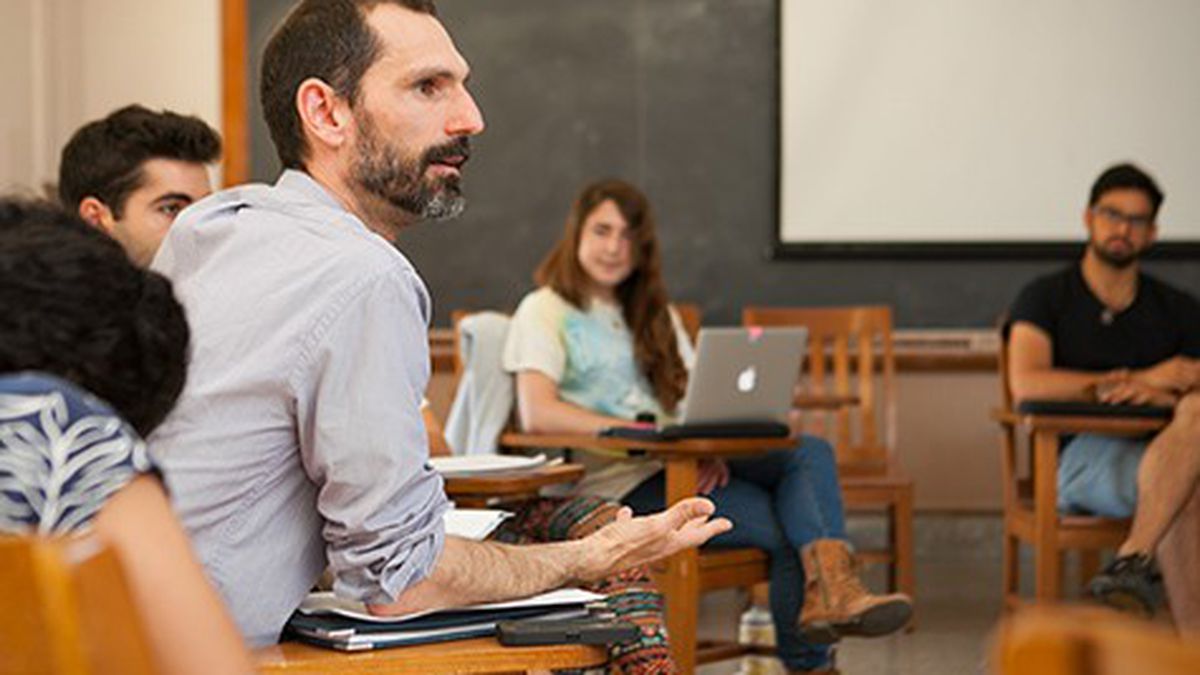On a sweaty afternoon in early August, approximately thirty UC Berkeley students trickled into a large lecture hall that was booming with Dr. Dre’s new album, Compton. The students were unfazed by the incongruous soundtrack to their summer course. A petite woman in a fitted, red suit with gold hoops beneath her blonde hair stood in high heels before the podium, bobbing her head to the beat and mumbling the verses under her breath. The spunky lecturer was Sarah Lappas, who was nearing the end of her first term teaching an American Cultures course called “Hip-Hop in Urban America” for the UC Berkeley music department.
American Cultures (AC) courses are often colloquially referred to as UC Berkeley’s “diversity requirement”: Each student is required to take at least one in order to graduate. Numerous departments on campus offer the courses, and they’re usually taught by some of the university’s most enthusiastic professors and lecturers. “I almost missed my exit because I was listening to this album this morning,” said Lappas, as she welcomed the class, referring to her commute to campus.

A UC Berkeley graduate student assistant, an undergraduate ACES student, and a RYSE youth member crack up between rap verses in the sound booth at the RYSE center in Richmond during Lappas’ last session there for the summer. Credits: Bert Johnson 
Suzan Akin is one of two members of the ACES administrative staff. Credits: Bert Johnson 
Lappas roots her course in “ethnomusicology,” a discipline that analyzes the connections between the technical facets of music and the cultural context from which it emerged, looking at music as a social product and force. “Hip-Hop in Urban America” takes the urban circumstances of the nation’s major rap cities — with a heavy focus on the Bay Area — then relates them to the most popular hip-hop that came out of those regions.
Lappas invited local musicians to speak to the class during the summer session, including the legendary Mistah F.A.B. and the more recently popular Daghe, to present their music from their perspectives. Then, at the end of the course, Lappas dived into aspects that aren’t geographically specific, such as “gender and hip-hop,” which was the topic on the afternoon I visited.
Lappas posed some questions to the class in order to kick off the discussion: “How has gender identity in hip-hop been shaped by the post-industrial urban landscape?” Toward the end of a spirited lecture that encompassed both theory by bell hooks and a debate over the merits of Nicki Minaj, one white student raised his hand and said, “I just don’t think [hip-hop] is all that deep.” That’s a critique Lappas is used to hearing. She explained to the student that for most of his life he’s been trained to consider some cultural products and forms of knowledge to be more valuable than others. But what makes Shakespeare’s poetry more worthy of discussion than contemporary rap? Rap, Lappas added, has historically been a rich artistic strategy for existing within disenfranchised communities — communities like many of the ones that exist just outside of UC Berkeley’s confines.
For students accustomed to studying a conventional curriculum, it can be difficult to see the value in work that extends beyond that realm. But four students in Lappas’ class were able to bridge that gap by literally extending themselves into the communities to which Lappas was referring. As part of an American Cultures Engaged Scholarship (ACES) supplement to the course, the four students accompanied Lappas every Tuesday and Thursday after class during the summer to volunteer at RYSE youth center in Richmond. The nonprofit offers local youth a variety of social-justice oriented programs to nurture their wellbeing, and the students assisted Lappas in teaching a condensed version of her UC Berkeley lecture on Tuesdays, then collaborated with youth to funnel personal experiences into professional-grade hip-hop songs on Thursdays.
At RYSE, it’s easier to understand how hip-hop could be “deep,” and studying it could be valuable for students. “To understand that where we’re at in the industry, what you hear on the radio, the messages that are being put out there, they have evolved and they haven’t always been and they don’t always have to be,” explained Dan Reilly, RYSE’s director of Media Arts and Innovation. “To really develop a critical ability to think about and question the world that they’re in, the world around them, the world that they want to see.”
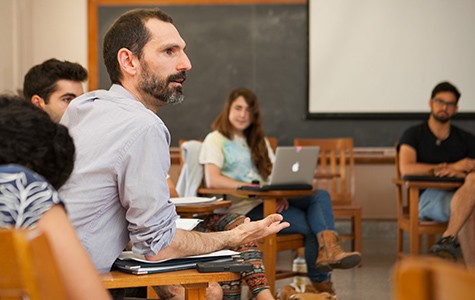
But Lappas can only hope that in the coming semesters, Cal will continue to approve her class and fund its ACES supplement. That’s because the ACES program no longer has a stable source of funding and lacks support from the university. The program started as an experiment in 2010 when the Evelyn and Walter Haas, Jr. Fund donated $947,000 to the AC Center specifically to foster partnerships between the community and the classroom. Over the past five years, the center developed nearly forty new ACES courses that incorporate partnerships with local organizations into the curriculum. But last spring, at the end of the 2014–15, the money ran out.
Now, the ACES program is struggling to survive on temporary funds, primarily fueled by a small coalition of avid supporters with a vision of offering an engaged public education. Beyond funding, the program faces endless bureaucratic obstacles that many argue emerge from a fundamental rift between the ideologies that uphold the ACES program and the underlying ideology of the university.
And as UC Berkeley continues to move toward privatization, the ACES program presents a radical democratic alternative — breaking down the ivory tower by bringing the university’s brain power to issues in the communities that surround it, and learning directly from those communities in the process.
Troy Duster’s office is housed off-campus, in an old, annexed building. Its shingled, wooden exterior recalls another era of UC Berkeley, before People’s Park was an icon of democracy and far before the park became an encampment for homeless people. As we sat in the building’s conference room recently, Duster laughed jadedly and commented on the lack of care that the university has put into maintaining the building, pointing to the parking lot outside and recalling the flourishing garden that once grew there.
At age 79, Duster is a Chancellor’s Professor of Sociology — a comfy title — and has a unique understanding of the history of UC Berkeley. He began researching there in 1967 and started teaching in the sociology department in 1970, later becoming the chair of the department, the director of the university’s Institute for the Study of Social Change, and the head of the AC Center for a short run. Today, he’s among the most highly respected sociologists in the country, but he recalls being one of just six Black faculty members at Cal in the Seventies, out of approximately 1,350 — and the only Black professor in the social sciences.
Duster began teaching at UC Berkeley during a time of tumultuous racial and ideological tension. In the Fifties and Sixties, colleges were either 98 percent white or 98 percent Black (Native Americans barely had access to higher education and the Latino population was far smaller than it is today). Duster refers to this period as the “American apartheid” of higher education. Then, in April 1968, Martin Luther King Jr. was assassinated, sparking a dramatic shift in race relations in the United States. Within eight years, the majority of Black college students nationwide were attending historically white universities. Ivy Leagues went from 1 to 2 percent Black to 7 to 8 percent — an increase that now seems small in numbers but was culturally seismic at the time.
Similar demographic shifts occurred in corporate America and the US military, but, from Duster’s perspective, universities put up the biggest fight. “The one place you would have thought liberalism or progressive thought would have been a convenient or fertile ground for this transformation was the opposite,” he said.
As the more diverse student body demanded a more diverse education, the nearly all-white faculties at US universities fiercely guarded the notion that a proper education emerged from studying the whitewashed canon of Great Books, and viewed anything that might question the objectivity of that premise as an unwarranted political intrusion, Duster explained. “The faculty attitude around the country was, ‘We let you in here. Come in, sit down, and enjoy the show,'” he recalled.
In 1968, radical students of color at San Francisco State University and UC Berkeley had formed the Third World Liberation Front — a vanguard inspired by the Black Panthers and postcolonial thinkers such as Frantz Fanon, Che Guevara, and Malcolm X — and demanded a diverse curriculum. Through strikes and protests, groups at each campus successfully convinced their universities to establish Ethnic Studies departments. But that was only the beginning of a necessary shift toward multiculturalism for UC Berkeley. United, students of color — with the help of a few professorial allies — continued to challenge the university to stop excluding theorists of color from the curriculum.
In 1980, Michael Heyman became UC Berkeley’s chancellor. With a background in law, he was less entrenched in philosophical elitism than much of his faculty and wanted to see a more diverse university. He appointed a committee of the nation’s preeminent scholars from a range of fields to look into the students’ demands. Eventually, they determined that the curriculum, indeed, only offered a narrow view of the topics it claimed to cover. Thus, the controversial American Cultures requirement was born. From then on, the campus mandated that each student take at least one of the program’s courses, which were required to compare perspectives from at least three different cultures. In the beginning, there was not one course being taught that fulfilled the comparative frameworks requirement, and the subsequent effort to develop courses catalyzed one of the most drastic ideological changes in the university’s history.
Heyman’s term hosted the glory days of American Cultures. But over the years, the administration pushed it to the university’s backburner.
Today, however, there is a coalition of UC Berkeley students and teachers, brought together by the ACES program, who still have a radical vision for the kind of inclusivity and democratic production of knowledge that the American Cultures requirement can bring to a university. They believe that diversifying the curriculum must extend beyond the Band-Aid solution of offering multicultural perspectives to actually changing how students learn and who they learn from. Certain intellectuals at UC Berkeley, including influential Ethnic Studies professor Carlos Muñoz, have been proposing this type of education for decades, and studies have shown that engaged community scholarship work helps students understand complex structures of inequality.
“Race in this country has gone through epochal changes and shifts in attitudes and we went through an awful period … where we just celebrate differences and go away pretty much with a Rosa Parks-Martin Luther King-Cesar Chavez kind of framework in our heads,” said Victoria Robinson, current director of the AC Center and the head of the ACES program. “This is very complicated, critical diversity work that holds on to the necessities of each one of us and our roles and opportunities to create structural change and social change. … We propose that one of the best ways to achieve that complicated curriculum is through engagement with our community organizations who are often living and breathing — as well as theorizing, because they are also theorizing — the work that we think about.”
In addition to directing the AC Center and leading the ACES initiative, Robinson also teaches in Cal’s Ethnic Studies department. She’s a prolific worker who rarely has a moment to spare, yet when she sits down with you in a meeting she is fully engaged, and emits a palpable sense of caring commitment.
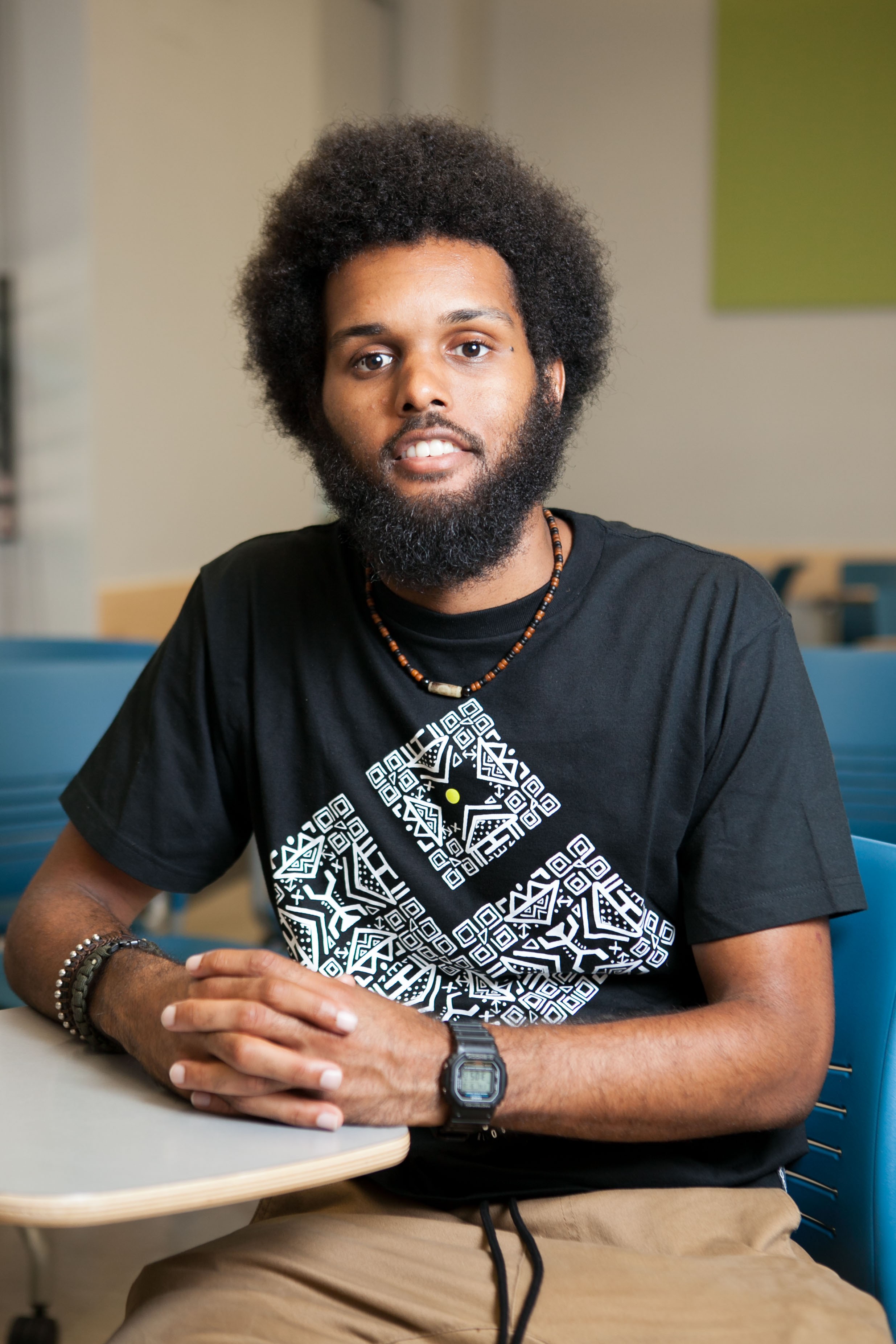
ACES formed out of a partnership between the AC Center and the university’s Public Service Center, a resource that helps students find internships and volunteer opportunities with local organizations. Suzan Akin, an employee of the Public Service Center, co-leads the ACES program with Robinson. That means managing everything from administrative tasks to holding intimate debriefings with ACES teachers in Robinson’s office, huddled around a small table with a copy of UC Berkeley alum Jeff Chang’s tome on the shortcomings of cheap multiculturalism, Who We Be: The Colorization of America. Robinson and Akin are the entirety of the ACES administrative staff — and they both only work part-time on the program.
When the ACES initiative kicked off in 2010, the plan was to use the $947,000 donation to develop thirty courses over five years. By the end of that stretch, Robinson and Akin had managed to bring 38 ACES courses to fruition. ACES courses come about in a variety of ways. Sometimes a professor or lecturer wants to incorporate a community partnership into an existing American Cultures course, or they have a brand new idea for a class. Other times, Robinson and Akin have a community partner in mind and approach an instructor to teach the course, or a teacher wants to incorporate a community partner into his or her class, but needs help from Robinson and Akin to find the right partner. In some ACES courses, all the students participate in community partnerships, while in others, the ACES component is an optional supplement to an AC class. Each course receives a small stipend to employ a graduate student teaching assistant to help with the class.
The initial arrangements are flexible, but Robinson and Akin are strict about how each course turns out. Every ACES teacher is required to attend special workshops on engaged scholarship. That education is designed in part to ensure that ACES classes don’t consist merely of local organizers and advocates coming in for a guest lecture or UC Berkeley students showing up to a nonprofit organization to do administrative-type jobs. Robinson and Akin also ensure that ACES classes never consist of students entering a community-run space and preaching academic expertise. Rather, ACES partnerships are crafted so that students gain specific skills and experiential knowledge that fit into the course curriculum while also deepening the work of the partner organization by meeting a specific need — such as, finding answers to research questions, developing models, or mentoring youth. Ideally, partnerships are designed to be long-term, so that each class of students contributes to a complex goal that can take up to ten years to accomplish. “[UC Berkeley] is normally pretty faculty-centered and student-need oriented, and we’re actually trying to complicate that by looking at reciprocity and mutuality,” said Robinson. “And it’s hard. That’s a harder set of relationships to hold.”
Many students arrive at UC Berkeley with a specific image of the university in mind — one that stems from photos of the Free Speech Movement and involves bands of students uniting to fight for the change they believe in. But they often find that the political climate on campus is much less heated and far less informed than they had anticipated. Instead of a campus uprising, “Free Speech Movement” now refers to a campus cafe that sells $10 sandwiches and has a photo of Mario Savio plastered on the wall.
For young idealists, there are relatively few places on campus where they can delve into the history and practice of organizing. But Sean Burns’ ACES course, “Social Movements, Urban History, and the Politics of Memory: San Francisco Bay Area, 1769–2015,” is one of them. Burns, who is now the director of the Office of Undergraduate Research & Scholarships, has been involved in both teaching and community organizing since he was an undergraduate, and has long been interested in bridging the disconnect between them, so when the opportunity to develop an ACES course arose, he jumped on it.
Burns’ class is an abridged history of Bay Area social movements that leans heavily on guest lectures by local activists. The community partner for his course is Found SF, a San Francisco-centric online community history archive that documents marginalized narratives through crowd-sourced research and other projects. By the end of Burns’ class, each of his approximately twenty students produces a history project to contribute to the website, adding to the depth of its East Bay coverage with original interviews conducted with community members. When he taught the course last spring, project topics included the history of Oakland’s DeFremery Park and the various groups that have used the space for organizing; the history of queer spaces in the East Bay with a focus on the White Horse Inn; and the history of the East Bay punk scene as told through the evolution of the house show.
I visited Burns’ course during the late afternoon of 4/20, a time when, every year, hordes of students skip class to gather on the lawn and smoke pot. But every one of Burns’ students was present in their seats that day, eagerly listening to Ed Wolf speak about his influential work in the Eighties with HIV/AIDS victims in San Francisco. Many of these students, Burns later told me, have personal investments in the movements they chose to write about, and are seeking insight into histories and community spaces that can otherwise be difficult to access as an undergrad.
“[My class] is not just about a particular kind of knowledge production, it’s also so much about relationship-building,” said Burns. “They sort of have access and entry to communities that they yearn to be a part of. … What’s going on there is exposure to other human beings, carving their lives and modeling ways forward that are other than just get the degree and get the J-O-B job.”
Because UC Berkeley undergraduates are busy fulfilling demanding coursework, it can be difficult for them to find time to volunteer or do the types of internships that can help them land a job at a nonprofit in the Bay Area. And if a student needs to work throughout college in order to pay his or her rent, that opportunity becomes even more unrealistic. As a result, the chance to do social justice work after college becomes limited if students can’t get that experience through their coursework.
So, many of those initially bright-eyed idealists end up being sucked into the career pipeline, which churns them out with a solid skillset, but leaves them without exposure to the Bay Area beyond the Berkeley border.
Conversely, students who are passionate about extracurricular activities, or are passionately involved in a movement, often don’t get top grades in school because the university doesn’t reward their community work — including the work that Cal students do in ACES. Moreover, ACES courses require a lot of a student’s time and energy.
Lappas attempted to alleviate this problem with her summer course because she didn’t want her ACES students to be charged for extra units. In summer courses, students must pay per-unit tuition for classes, and a class with an ACES supplement costs extra because it’s worth more units (although the units usually don’t equal the amount of work the supplements require). So instead of having to pay for those extra units, Lappas allowed her ACES students to skip the two hours of required discussion section each week and go to RYSE instead. Even so, in addition to having to travel all the way to Richmond, her ACES students spent at least twice the amount of time at RYSE as they would have in a discussion section.
Marcel Jones is one of those actively engaged students who has had a difficult time juggling his personal drive to do social justice work and his academic responsibilities. Jones is a fifth-year Political Economy and Anthropology student who works frequently with local organizations, including Berkeley Cop Watch; used to be co-chair of the Black Student Union; and once co-developed an ACES course about the history of Black and Brown student organizing and the ways in which groups have dealt with being both marginalized on a college campus and away from their community.
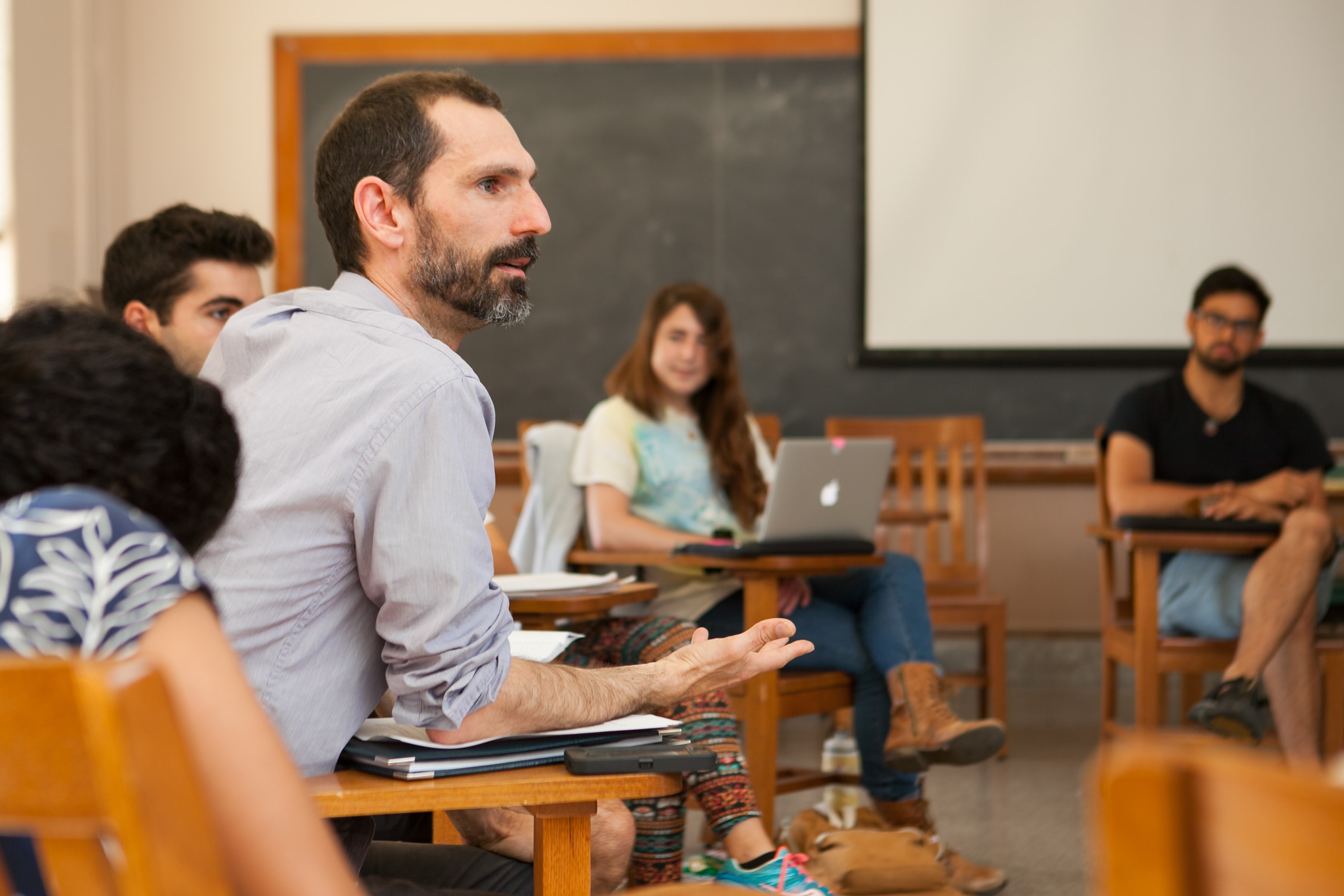
“It’s always a series of choices,” he said recently while studying for a mid-term at a Berkeley cafe. “What do you prioritize? And sadly, it’s set so that in order to feel like you’re making change and fighting for something you believe in, you’re jumping through hoops to get a degree to help you do what you believe in.”
Brian Powers teaches an ACES course in the sociology department called “Sociology of Education” that parses the structural ways in which educational institutions reinforce structures of inequality that they claim to eliminate. For their community partnership, Powers’ students work as mentors at Oakland International High School, a school specifically designed for refugee youth who are all at varying levels of English proficiency. Powers said his students often need community engagement work in order to not feel helpless and frustrated at the end of a class that implicates them in a dismal system of inequality.
Austin Pritzkat, a fifth-year political science major with a minor in public policy and another minor in city planning, took Powers’ class when he was a freshman and has remained involved with the ACES program ever since, in part serving as an undergraduate teaching assistant for Powers. “At the end of the day, when we read about health disparities or education disparities or various other social issues, these are human beings, these are families, these are communities who are living this,” said Pritzkat. “ACES is a fundamental part of a larger process that I am engaged in about trying to challenge my understanding of my own social position in the world and in the community.”
In spring 2014, administrators in Cal’s College of Engineering sought out Khalid Kadir to teach an ACES class. It was clear at the time that the College of Engineering needed to quell the criticism over its lack of racial and gender diversity, and officials figured that a socially engaged course might do the trick. Kadir, a charismatic lecturer who teaches both engineering and political economy, was the rare person for the job. But on his way to meet with administrators, his motorcycle spun out of control and launched him onto the side of the road. He still managed to make it — albeit a bit late and quite bloody. He put off the emergency room until after the meeting. “I guess that gives you a sense of how cool I thought the idea was,” Kadir said in an interview.
The class that Kadir ultimately developed is “Engineering, the Environment, and Society,” an American Cultures course hosted by the College of Engineering with an optional ACES component. The class asks many of the questions that Kadir didn’t confront until he was attending graduate school: “What are the politics of engineering? What are the ways in which engineers depoliticize problems — how they draw a box around a thing to exclude questions of power and inequality and just deal with the technical aspects? And how does that reinforce those structures [of inequality]?” Students who take the course’s ACES supplement collaborate with local organizations such as Urban Tilth in Richmond to do research and develop engineering models that they need.
But despite his initial enthusiasm, Kadir admitted: “If I had known what I was going to have to go through for that course up front, I wouldn’t have done it.” The development was laborious, the approval process was a fight, and the reaction from his academic peers was “ugly,” he said. “I’m happy I did, but that process was painful.”
Plus, committing to the course was a huge career risk. Kadir dropped one of his usual classes to take on the ACES course, but the latter wasn’t actually approved by the College of Engineering until the opportunity to teach his usual course was long gone. If the class hadn’t been approved, Kadir’s full-time job would have become part-time that semester. It’s a risk that repeats itself, because Kadir’s course doesn’t represent any kind of core requirement for the engineering major, so it must be reapproved each semester. Although Cal students are required to take an AC course to graduate, there is no mandate that any specific department, including engineering, offer such a course. “This is a bastard stepchild of the college of engineering — just hanging out,” Kadir said of his course.
But according to Kadir, the resistance from other engineering professors was even worse than the lack of job security. While courses that incorporate social justice-oriented perspectives into the curriculum have become welcome in the humanities, Kadir found that in the technical sciences they are still seen as a threat to the objectivity of the rest of the coursework. In the undergraduate engineering department, Kadir’s is the only one that diverts students from the high-school-to-tech career pipeline by posing ethical questions. That type of questioning isn’t generally welcomed in departments like engineering.
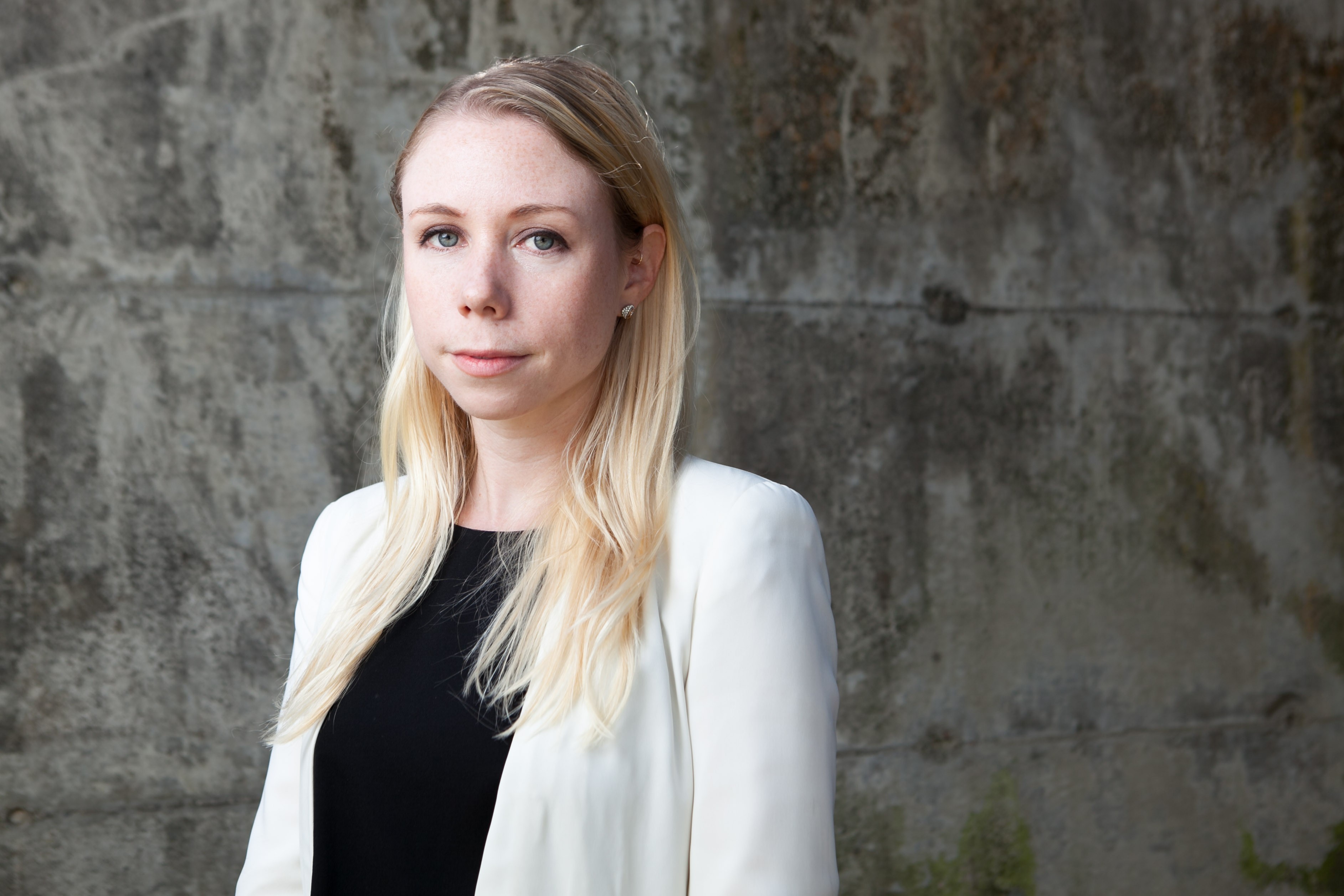
Kadir said that many people assume all engineers are only interested in working at Google, when, in actuality, lots of technical students yearn for the kinds of challenges presented by courses that explore human quandaries. However, the students just don’t have the time to take such courses. Engineering and computer science are notoriously rigorous undergraduate majors at UC Berkeley, often taking over the lives of those who wish to succeed within them. “That’s not fair because what happens is — guess what? — those students aren’t engaged in campus activities,” said Kadir. “They aren’t engaged in activism. They aren’t engaged in taking control of their education because they don’t have the fucking time — because they’re gonna fail their classes if they do.” It also means that one of the disciplines with the most potential to produce innovative solutions for community issues puts out the least.
ACES classes require extra work for the teachers as well. Kadir spends time not only maintaining his partnerships, but also staying late in the lab to help students with projects that differ from the problem sets they’re used to. Lappas is essentially teaching two classes for the price of one. And Burns said that there’s no way that he could facilitate the myriad community partnerships his class requires if he hadn’t spent years building and maintaining those relationships. The problem is that ACES requires a different kind of work — a kind that university doesn’t acknowledge.
“The American Cultures classroom is built around the complexities of culture-making, past, present, and future — particularly around the complications of race,” said Robinson. “That means it’s heavy intellectually and heavy emotionally, so those two things together — heavy and busy — mean that these classes are really far more than a regular class.” Bureaucratically, however, they’re equivalent.
Teaching an ACES class can be an especially difficult decision if an instructor is vying for tenure. If that’s the case, then the teacher should be spending all of his or her extra time doing research — and not collaborative research. The distinction between research and service can be blurry, but the former helps your career a lot more than the latter. ACES work usually falls under service. “The reality is that so many of these courses are taught by lecturers precisely because of some of the demands and politics around what is valued as research,” said Burns, adding that it doesn’t make sense for tenure-track instructors to do it. “The people who only teach are the ones pushing the pedagogical envelope at Cal.” Yet those people are the university’s disposable employees, excluded from its faculty pipeline.
Like students, tenure-track instructors are implicitly encouraged to put community engagements aside until they reach tenure. “[Administrators are] interested in high value research … assessed in dollars brought to the university,” said Kadir. “They’re not interested in things that don’t bear those fruits because they have a very economic mindset about it all, and I think unless that’s changed, things like ACES are always gonna have a real big fight.”
Still, ACES classes are constantly overflowing with students and the instructors who teach the classes say it’s worth doing, just for the fulfillment. “I work seven days a week,” said Kadir. “I’m not gonna do that for sixty grand a year and insecurity if I’m not gonna enjoy it.”
When Chancellor Nicholas Dirks arrived on campus in 2013, he called for a return to the university’s utopian ideals, and a renewed commitment to fulfilling UC Berkeley’s mission as an institution that truly serves the public. Part of that call included the announcement of an initiative to transform undergraduate education at UC Berkeley. He appointed a committee of deans and advisors, along with Catherine Koshland, vice chancellor of undergraduate education, to dissect the curriculum and rebuild it for the better.
Two years later, the campus community is still waiting to hear that plan. In a recent interview, Koshland said that the announcement is slated for next spring.
Robinson and Akin, meanwhile, are anxiously awaiting the chancellor’s priorities, which will determine whether the university considers ACES to be a failed experiment or a new commitment. The way ACES currently operates, now that the Haas donation has run out, the duo must submit their budget to the university and pray that it gets approved. That means the program has no security and no room for growth. But in order to address the structural issues that ACES faces, Robinson and Akin argue that the program needs much greater financial support.
“Our model is not an expensive model and it’s not a model we would like — really, it’s a smattering of resources that are very thin in terms of what we’re trying to achieve,” Robinson said. “If we really want to take this seriously, we need a lot more financial support.”
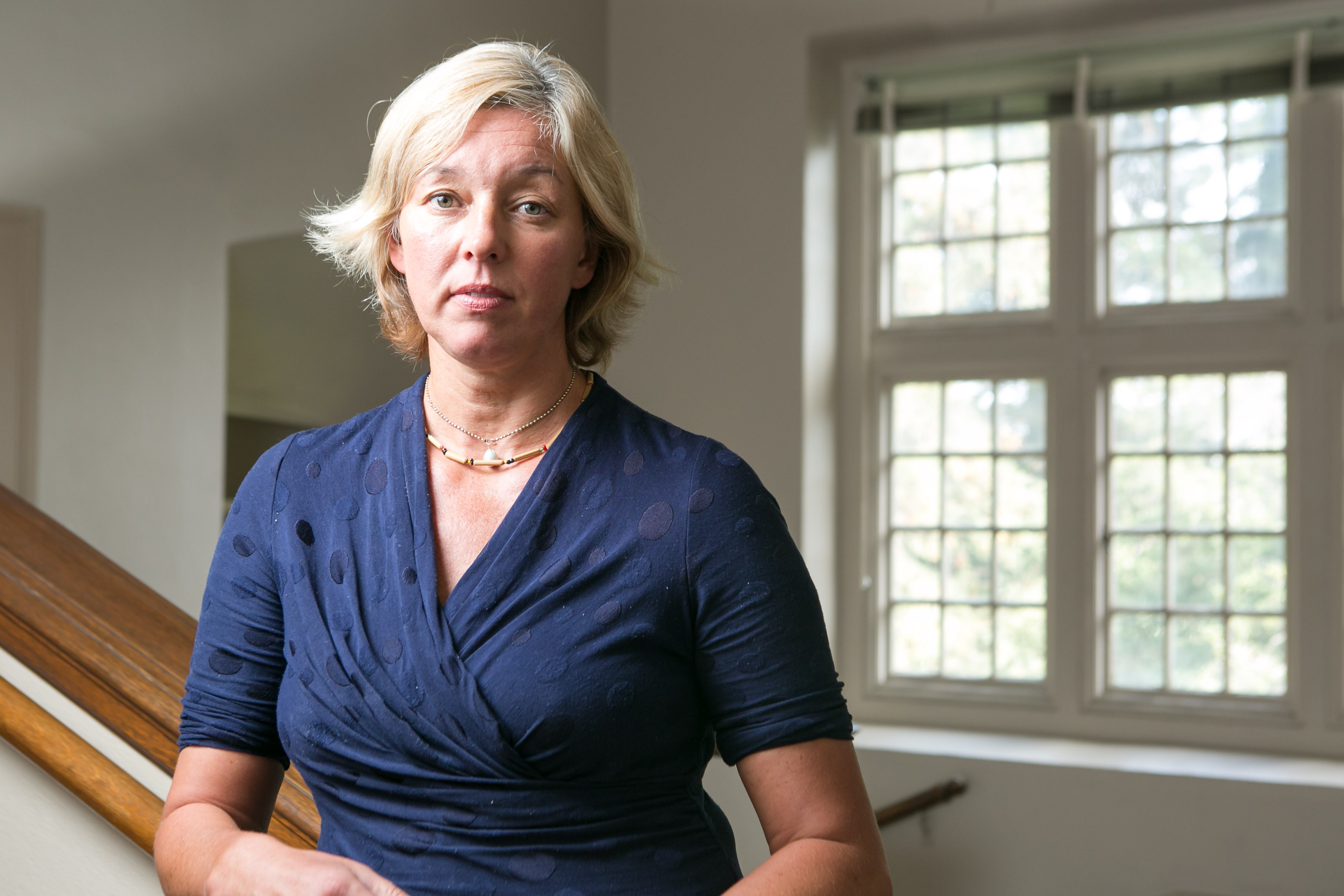
The university has approved Robinson and Akin’s staffing positions within ACES for the next year. But with each of them working in the ACES program only part-time, that won’t be enough to accomplish what they would like with the program in the future. Meanwhile, ACES instructor Powers argued that the AC Center as a whole should be revitalized. “Our campus is rich with resources but there’s no AC Center,” said Powers, referring to the fact the AC Center no longer has the resources and programs for teachers that it used to offer. “The AC requirement requires faculty who aren’t specialists in this fraught topic of racial formation to acquire a certain proficiency. Where are they going to acquire that if they’re focused on research?”
Many UC Berkeley students, meanwhile, still aren’t even aware of the ACES program, even though multiple student groups have declared it a priority. In 2013, the ASUC (UC Berkeley’s student government), put forth a bill requesting that the university dedicate institutionalized funding to the ACES program, and last spring semester the school’s Black Student Union included funding for ACES in its demands. Pritzkat — Powers’ devoted ACES fellow — was part of the ASUC when the bill passed. He said administrators promised that steady funding was on its way, but so far it hasn’t come. “ACES doesn’t work to completely dismantle, but at least erode, the wall that gets created between this ivory tower — the university — and the community,” said Pritzkat. “I think the university doesn’t know how to handle this type of radical academic work that is bringing community in. … We’ve been beating this drum about how cool ACES is for at least four years.”
For her part, Koshland said in an interview that she considers the program to be wildly successful. “We’ve seen the value of this kind of education,” she said, “and are committed to finding ways to continue to support it.” But ACES is tied up in the larger funding challenge on campus, she said.
Koshland said that ACES will be included in the chancellor’s undergraduate initiative priorities to some degree — likely as part of a new mandate that all undergraduates complete some kind of in-depth capstone project in order to graduate. But when asked about institutionalized funding, she said that the university will look for more philanthropic funding — like the $947,000 it received from Haas. (The AC Center and AC courses are not at risk of having no funding in the future like ACES is.)
So, even if ACES ends up being a priority, everything could stay the same. “We’re sort of in this landscape where, even if the work you’re doing is considered a priority by the campus … that doesn’t necessarily guarantee any sustainability or stability for the work or the ability to kinda continue and grow that work and do it in a deeper way,” Robinson said. At least, she and Akin added, it would be much easier for them to secure outside funding if the program is incorporated into the chancellor’s priorities for undergraduate education to be released next spring.
“Somebody said last week that the best way to describe [UC] Berkeley is: ‘Berkeley exists, despite itself,'” added Robinson. “And that’s true, you know?”
On the last day that Lappas and her ACES students spent at RYSE it was difficult to tell the difference between them all. If it wasn’t for Lappas’ white suit and her students’ required visitor tags, the UC Berkeley students and RYSE high-schoolers would have been indistinguishable as they laughed and took turns laying down rap verses in the sound booth at the center. The next week, Lappas surprised her students with a special performance by local rapper Iamsu! that followed the students’ own showcase. But during that last afternoon session, she was still double-checking whether the UC Berkeley students needed a ride to BART and whether all her RYSE participants received a piece of pizza. Yeah, it’s a lot of work, she admitted. But it’s worth it.
For RYSE — like many of the ACES community partners — partnerships are a core part of its model. Plus, it’s crucial for RYSE youth to be exposed to university students. “To be able to work closely with college students that are at a prestigious four-year university, that alone is a huge benefit to our young folks,” said Reilly. “Engaging with college professors, making college seem accessible and familiar … it’s a really empowering experience for our young folks.”
Indeed, at the end of the day, Miyosha Cooks, a junior at Kennedy High School in Richmond who claimed to be a horrible writer, offered to read me the poem she had composed during a workshop with Lappas and her students. It was called “A Cold, Pale World,” and it was a touching and articulate piece about struggling to fit in. After high school, she hopes to attend either UC Berkeley or UCLA.
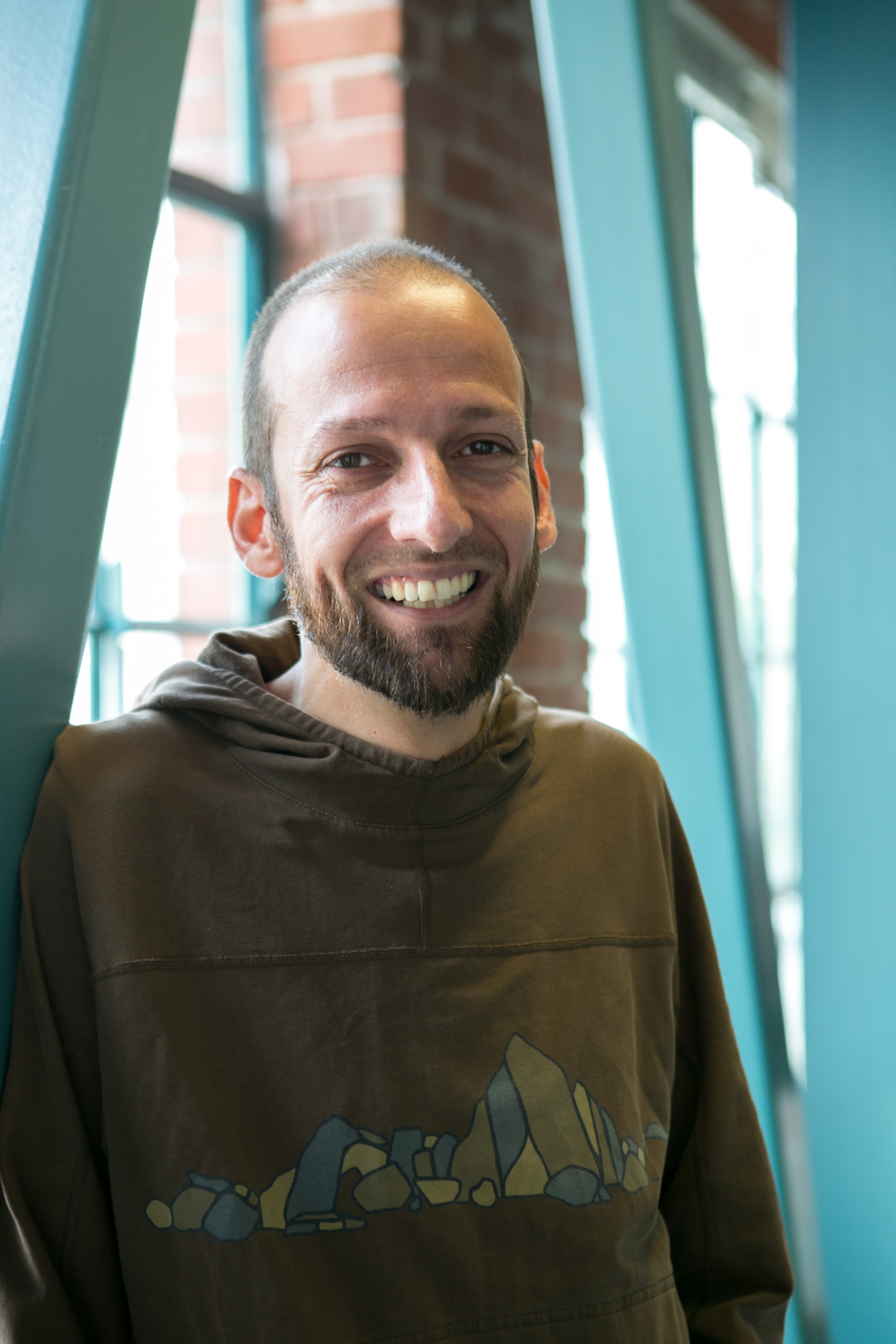
At a time of rapid privatization of public universities, ACES represents a refreshing reconceptualization of welcoming others in and expanding its work outward. And, as many of the ACES teachers and students have pointed out, UC Berkeley is uniquely situated to host that kind of engagement because of its history and because it’s surrounded by so much organizing and nonprofit work.
“The public interest is in our favor and higher education is under pressure to show its value,” said Robinson. “And it’s contentious, but part of the kickback from [Sacramento] is, ‘What do you for the state of California?’ and part of what I think students value of the university is an education that matters — but also matters for the kinds of communities that they came from and for the kinds of futures that they want to lead.”
Robinson and Akin hope that ACES questions who the university is accountable to in a way that changes who the university responds to and how it responds, so that barriers between the university and the community begin to crumble. “We’re not just a public institution because we were funded as a land grant, and we’re not just a public institution because we have a certain percentage of in-state students, and were not just a public institution because preeminent faculty will do public talks, right?” said Akin. “But this idea that part of being committed to being a public institution is that we are committed to all of those ideas around equity and justice. … It’s sort of like, what is the purpose of an institution like this and getting an education at a place like this if it’s only for people’s personal gain?”


